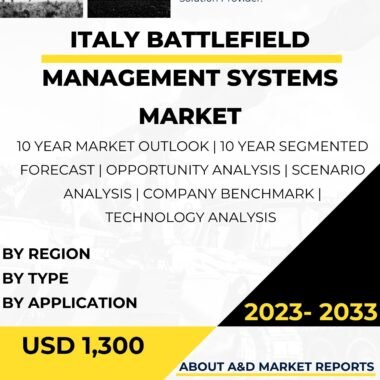Description
The Belgium defense heads-up display (HUD) market is a significant segment within the country’s defense industry. HUD systems provide critical information to military pilots, displaying essential flight data, weapon targeting information, and situational awareness directly in their line of sight. Belgium recognizes the importance of advanced HUD technologies in enhancing pilot effectiveness, reducing workload, and improving mission success rates.
The primary driver for the Belgium defense HUD market is the need for advanced and intuitive display systems that provide pilots with real-time information while minimizing distractions and maximizing situational awareness. HUDs allow pilots to access critical flight data, such as altitude, airspeed, heading, and navigation information, without having to divert their gaze from the outside world. This enhances pilot efficiency, reduces reaction times, and enables them to focus on the mission at hand.
Belgium’s domestic defense industry plays a crucial role in the development, production, and integration of HUD systems for military aircraft. Belgian companies, such as SABCA and Thales Belgium, have expertise in avionics and display technologies, contributing to the country’s defense capabilities. These domestic capabilities foster innovation, create job opportunities, and contribute to the economic growth of the Belgium defense HUD market.
Collaborations with international partners and suppliers are also significant for the Belgium defense HUD market. Belgium often engages in partnerships with defense companies from NATO member states and other allied nations to access advanced HUD technologies, benefit from joint development programs, and ensure interoperability with allied forces. These collaborations enable Belgium to leverage global advancements in defense HUD systems and enhance its military capabilities.
Furthermore, Belgium’s participation in multinational defense initiatives influences the defense HUD market. Collaboration within NATO and other international defense cooperation programs fosters interoperability, joint training exercises, and the exchange of best practices. This cooperation ensures compatibility and enhances operational effectiveness when conducting joint military operations with allied forces.
The Belgium defense HUD market faces challenges such as technological advancements, integration considerations, and human factors. Technological advancements in HUD systems, including improvements in display technology, augmented reality, and sensor integration, require continuous research and development efforts. The Belgium market needs to stay at the forefront of innovation to provide state-of-the-art HUD systems that meet evolving defense requirements.
Integration considerations are crucial for the successful implementation of defense HUD systems. Belgium’s defense industry must ensure seamless integration of HUD systems with various military aircraft platforms, avionics systems, and communication networks. Interoperability, compatibility, and efficient data exchange between HUD systems and other onboard systems are essential for the successful operation of integrated military platforms.
Human factors play a significant role in the design and implementation of defense HUD systems. Belgium’s defense industry must consider factors such as ergonomics, visual clarity, and user interface design to ensure that HUD systems are intuitive, easy to use, and enhance pilot performance. Human-centered design principles and user feedback are essential to optimize the usability and effectiveness of defense HUD systems.
In conclusion, the Belgium defense HUD market is a significant segment within the country’s defense industry. HUD systems play a crucial role in providing pilots with critical flight data and situational awareness, enhancing their effectiveness and reducing workload. Domestic capabilities, collaborations with international partners, and Belgium’s participation in international defense initiatives drive the growth and development of the defense HUD market. As defense requirements evolve and technological advancements continue, the demand for advanced and user-friendly HUD systems is expected to increase, fostering innovation, collaboration, and economic growth within the sector.




